Puno to Copacabana | Things to do in Copacabana
In this series we look at the towns around Lake Titicaca in Peru and Bolivia as well as the commonly visited islands and attractions nearby. Last week we visited Taquile Island.
Puno to Copacabana
For most independent travellers, the trip from Puno, Peru to Copacabana, Bolivia is a piece of cake. The easiest and most cost-effective way is to travel on a coach, which leaves at ever-changing times from the bus station in Puno. However, just because it’s easy doesn’t mean it isn’t interesting.
At the border, you’ll disembark and get stamped out of Peru. You need to visit two offices: the first to have your arrival card checked, the second for it to be double-checked and to get your exit stamp. After that, you walk a short distance to another office on the Bolivian side. There’s normally a steady stream of people as well as a reasonable amount of signage to help you along.
Although many nationalities can spend up to 90 days in Bolivia without a visa, we did not see anyone have any success with having a 90-day visa issued. The border guards tended to give out 15-30 day entry stamps, requiring long-staying travellers to have their stay extended in La Paz. Needless to say, this didn’t please some people who wanted to spend longer without having to visit La Paz.
There were absolutely no customs checks and, after everyone was through, we boarded the bus once more for the short drive on to Copacabana. A friendly tout joined us, organizing accommodation and onwards tours and transport for most people on the bus.
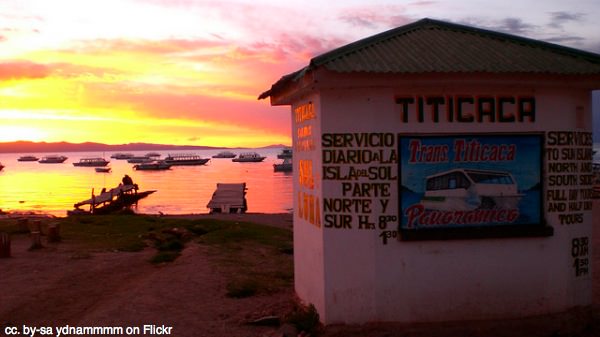
Things to do in Copacabana
The lakeside town of Copacabana is situated at the foot of a hill that ends in a wide bay facing Lake Titicaca. It’s the first Bolivian town that many travellers encounter as they make their way south from Cusco, Peru. Practically this creates all sorts of problems, as Copacabana has neither good internet access for further research nor an ATM for local cash withdrawals. It’s highly recommended to bring a good supply of Peruvian soles or, even better, US dollars for exchange. The rates we were quoted for other major currencies, like the Euro, were diabolical.
Our cashflow problems solved by a stash of emergency dollars, we were free to wander the long rocky bay and start to explore the small heavily-touristed community.
Copacabana waterfront
Any street leading downhill will eventually spit you out by the water. At the corner of the main street a ridiculously large green anchor stands alongside a few huts selling ferry trips and tours to the nearby islands. We walked left from here, past a row of tarpaulin-covered restaurant stalls and continued along the dirt road towards the point.
On our right, close to a hundred paddle boats sat forlornly by the lakeside, the paint peeling off the fiberglass representations of swans, dragons, and an assortment of Disney cartoons. By their numbers, I guess they’re quite popular when the weather is hot, but in the cool autumn they were abandoned.
Following the bay is an uneventful experience, but be sure to wear good footwear for the uneven, rocky shore. Your reward is a clear view back towards the town and a quiet uninterrupted walk away from the touts and other travellers.
Main street
Touts do throng the main street and even more so the plaza at the far end — however they’re mainly polite and not overly persistent. To be honest, you’re more likely to be bothered by the unavoidable numbers of fellow travellers chilling in the cafes or examining bead necklaces and the ever-present woollen handcrafts. Bars and internet cafes feature heavily along the strip, both offering slow, unreliable service.
Cathedral
The Cathedral — or, better called the Basilica of Our Lady of Copacabana — is easily found by following the main street away from the water. It’s an impressive building, both inside and out, with a large courtyard in the front. The Moorish style reminded me more of Istanbul than anything else we had seen in South America!
There are lots of little spaces to explore by following a door near the left of the main altar, and also a candle-filled room accessed from outside the Cathedral. Of course, these are all dedicated to housing statues of the legendary Our Lady of Copacabana.
Stations of the cross
Just a few blocks from the centre of town, you’ll find the ramshackle starting posts for a short but rather difficult walk. It isn’t technically challenging, but at thousands of feet above sea-level the slope makes for heavy breathing!
As you walk up, you find several posts designed to let you meditate on the life, death and resurrection of Christ. Many people I saw were using them as a chance to recouperate! It isn’t all spirituality: the hill affords great panoramic views of the bay and out to the islands.
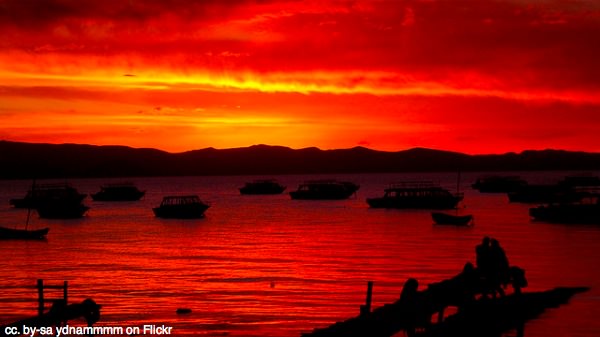
Island tours
Part of the attraction of Copacabana is leaving. Dozens of day-tours leave daily for the Isla del Sol and Isla de la Luna (Island of the Sun and Island of the Moon). When we were there the Isla de la Luna was closed, but there were great day-walks and camping possibilities around the mystical, sand-bordered Island of the Sun.
Do be careful though, and carry extra cash. It seems every community on the island wants to get in on the tourist dollar, and they do so by selling passes to walk the northern, central and southern stretches of the island-length day-hike. If you don’t have the money, you might end up retracing your steps and missing the ferry home.

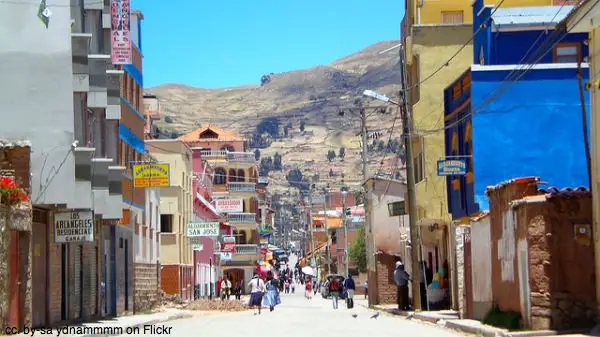
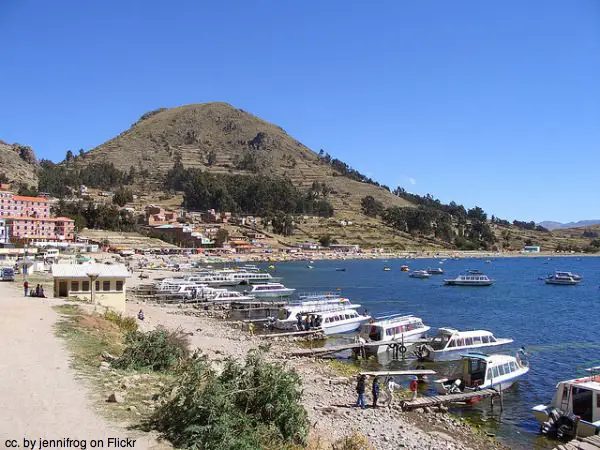
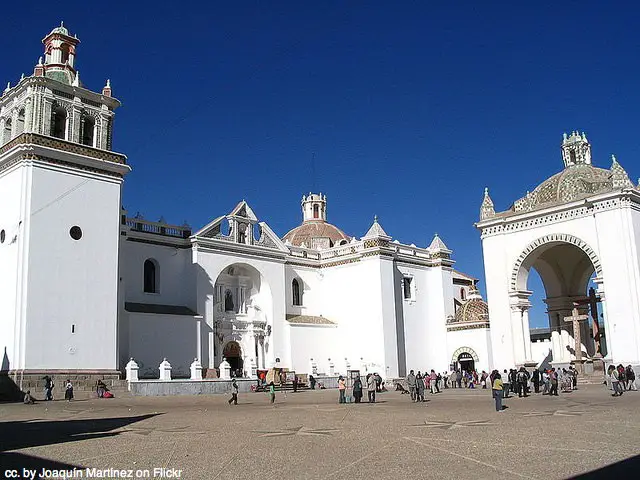
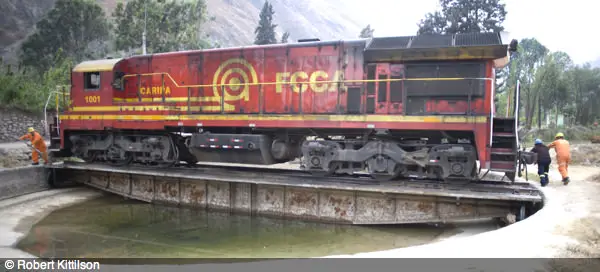

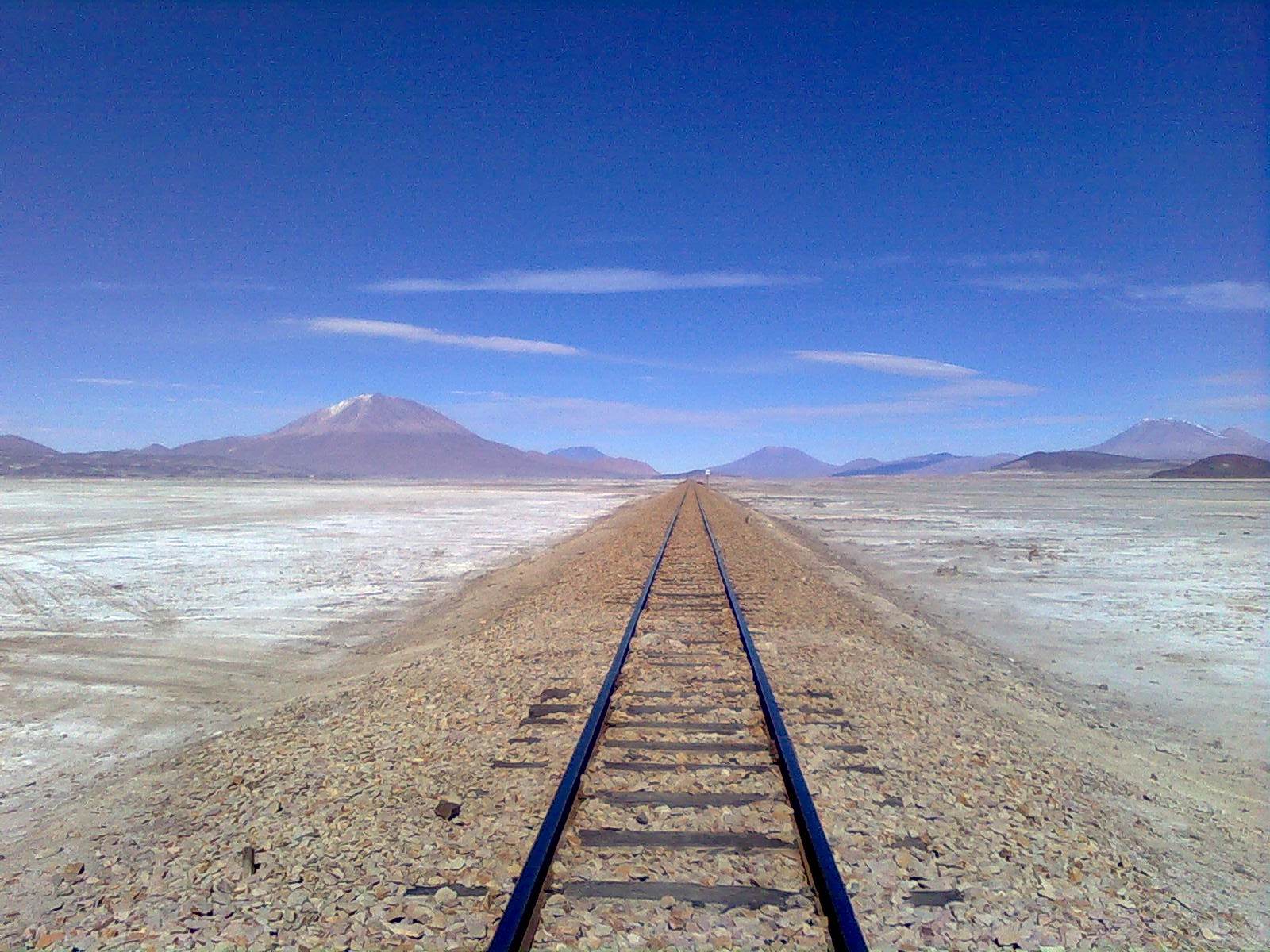
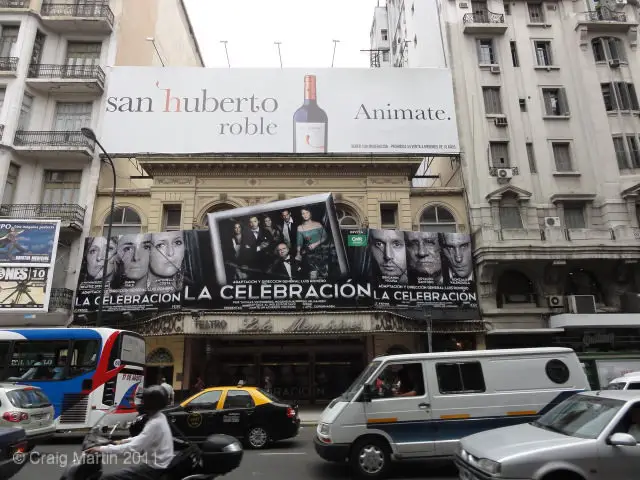

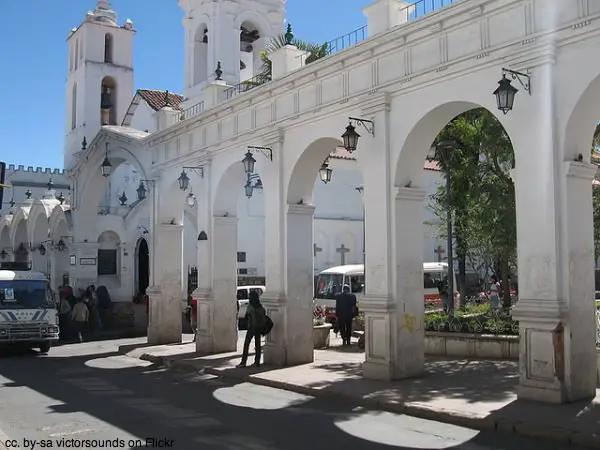
Hi,
I was wondering if you can get a boat from Puno to Copacabana via the islands?
If not how long does the bus take? Can you get a taxi?
Thanks
we would be happy to pay for a private water taxi as we do not have long.
Only 4 days to include travel from Arequipa to Lake Titicaca and then on to Cusco.
What would you recommend?
Hi Mary, as far as we know, a water taxi is still not an option. The water border is closed, so you must travel overland to go through customs and border control.
The bus trip is comfortable enough not to need private transport; but you might shave a little time off the journey. From memory (I don’t have my notes here with me), the price/time ratio didn’t work out for us.
Depending on your budget, an option might be Arequipa to Puno by bus, do an overnight Titicaca cruise/tour (skipping Bolivia altogether), then up to Juliaca for a flight to Cusco. That wouldn’t be cheap, but it would make good use of your time.
Is the four days just for transport and transit? i.e. You’ve already seen all you want to in Arequipa, and you have more time in Cusco?
Hi,
I wish we had more time like you guys but we only have four weeks!! So our itinerary is pretty packed….
We arrive in Lima sat evening (16th June) and want to be in cusco on Sunday 24th June for the festival of the sun which I believe (correct me if I am wrong!!) is on this day.
Because of this we are a little short of time for the first part of our trip which was to visit Arequipa, Puno reed islands and Copacabana & the sun island.
So far we are thinking:
Early flight (5.30) Sunday to Arequipa, day in Arequipa.
Monday – horse trek to colca canyon and camp overnight.
Tuesday – visit condor cross viewpoint and then private transfer with tourist stops to Puno. Overnight Puno.
Wednesday trip to visit reed islands. Get private taxi ( possible????) To copacabana (don’t know what time the border closes or if it’s possible to stay nearby)
Thursday day trip to sun island
Friday am chill in copacabana, then transport back to Puno.
Sat tourist bus to cusco.
What do you think?
Thanks 🙂
Hi,
We are just planning the trip to Peru and we have just found what you had written 🙂 Our plan is almost the same but we will have 3 days more. Thus, we are going to visit Islas Ballestas and Nazca, hovever if you read it can you tell us if your plan worked out. Thank you and regards Ela
Hi Ela,
got your message but I cant work out how to reply! If you email me again send me your email address and I can give you lots of tips on Peru!
we didnt go to Copacabana in the end as we decided it would e too much of a rush, and instead we opted for an afternoon trip to Silustani tombs. A most magical place in the setting sun…..
we visited the reed islands on a morning trip – We werent that enamoured if i am honest. It was interesting to see the reed islands. The lady who showed us ‘her’island seemed quite proud to be able to show us how it was made. BUT…. the trip and the islands are sooooooo commercialised. I was particularly unimpressed with the small children rattling off english songs (in triple time) and then expecting money ….
If you go to Peru you MUST MUST MUST get off the gringo route and visit the north. There are some AMAZING places up there (and at a fraction of a cost of the places on the gringo route!). we can make some recommendations. we spent a week in the north but i wish we could have spent another 3!
get in touch if you want to know more!
Mary
Sounds like you had an amazing time, Mary — so happy for you! Did you make it to Bolivia at all, or stay in Peru?
Where did you go in the north? We’re hoping to get back there next year or 2015.
Hi,
We just stayed in Peru – we could stay there for years and never see it all!
There is sooo much there. We were amazed on our trip to the north. there is so much information available about Machu Picchu but there are lots of amazing sites that nobody hears about.
We spent a week in the north at the end of our trip (i’ll post our trip itinerary if anyone is interested) and in short…..
we flew to Chiclayo
spent a night, wandered round the town, had a meal out
took an overnight bus to Chachapoyas
had breakfast in a nice cafe whlst waiting for the tour operator to open
took a tour to Kuélap (3hr minibus ride 3 hr tour including lunch 3 hr minibus back!)
took an overnight bus back to chiclayo
took a bus to Huanchaco
chilled for two nights before flying back to Lima to fly back to england
visited Tucame on a day trip from here (twice!)
Mega mega rushed! BUT…. Kuélap was amazing (despite the whole 9hr trip being less than a quarter off the price of Macchu picchu!) and I would thoroughly recommend anyone to go there. personally I enjoyed this far more than macchu picchu which I found (although dont get me wrong it was beautiful) a bit spoilt by the throngs of tourists….
i wished we had had more time to spend in Chachapoyas and to see hte many sights around there. Its a lovely little town to chill out in 🙂
Tucame was also amazing, i could go on about that for hours….
If you like archaeology youll love it! aparently it will all be gone in less than 80 years so see it while you can!!
have to go now – let me know if you want to here more!
Mary
Hi Mary, thank you very much for your message 🙂 The information are realy helpful. We are about to planning the trip so if you don’t mind we would ask you some more questions. My e-mail address is [email protected] What is your e-mail address? Thank you ones again and kind regards Ela